Today is the 47th Birthday of the post-Franco Constitution
Saturday, December 6, 2025
 47 years ago 88% of the Spanish people voted in a referendum to approve the new Constitution, three years after the death of General Franco, dictator of Spain since the end of the Civil War in 1939 until his demise in 1975, some 36 years in total. 47 years ago 88% of the Spanish people voted in a referendum to approve the new Constitution, three years after the death of General Franco, dictator of Spain since the end of the Civil War in 1939 until his demise in 1975, some 36 years in total.
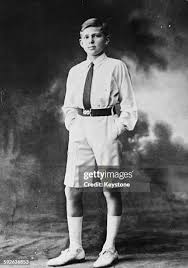 Franco had "adopted" Don Juan Carlos de Borbon y Borbon, grandson of the last king of Spain, Alfonso XIII, who abdicated in 1933 when Spain became a republic, and "groomed" Juan Carlos to be the next monarch on Franco's death. Franco had "adopted" Don Juan Carlos de Borbon y Borbon, grandson of the last king of Spain, Alfonso XIII, who abdicated in 1933 when Spain became a republic, and "groomed" Juan Carlos to be the next monarch on Franco's death.
The new king's inauguration took place two days after the dictator died, on November 22nd 1975.
The young Juan Carlos [Getty Images]
A note on Constitutions
Most democracies have a written constitution. The only exception I know is the United Kingdom, which relies on legal precedent.
Spain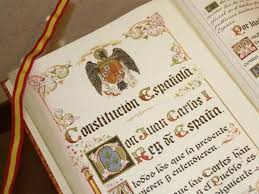
A young constitution, it has already undergone three changes: when Spain joined the European Union; when Felipe VI became king; and when Franco was effectively erased from Spain's history.
[El Confidencial]
Austria
Estabished after the end of World War II, it has already had over 100 amendments.
USA
The US Constitution, signed into law in 1789, has had a number of amendments, but the original remains unchanged.
Other countries:
France, Germany, Italy, Netherlands, Scandinavia and former eastern bloc countries all have constitutions. Other democratic countries too.
United Kingdom:
The UK does not have a written constitution. The rules and regulations are subject to the law of precedent. The Magna Carta, a document signed at Runnymede in 1215, is the nearest thing the UK has.
After Franco died what happened?
What Franco would not have expected was that the new king would lead the way in restoring Spain to full democracy within just three years, a relatively short space of time,
Attempted coup d'etat
In 1981 Lt. Col. Antonio Tejero and a group of 200 guardia civil and military stormed Las Cortes, the Spanish Parliament. Shots were fired but no-one was hurt.
The officers held the parliamentarians and ministers hostage for 18 hours, during which the King denounced the coup in a public television broadcast, calling for rule of law and the democratic government to continue.
The royal address fatally undermined the coup, and the hostage-takers surrendered the next morning and all deputies were freed.
A simultaneous coup attempt, executed by Captain General Jaime Milans del Bosch in Valencia, also failed.
Tejero, Milans del Bosch and a third conspirator, General Alfonso Armada, were sentenced to thirty years in prison. In 1988 the Spanish Supreme Court suggested pardoning Armada and Tejero; the government of Felipe González pardoned the former.
What ha ppened many years later could not have been foreseen. ppened many years later could not have been foreseen.
In June 2014 Juan Carlos I abdicated in favour of his son Felipe, who became el Rey Felipe VI.
Then stories of extra-marital affairs, back-handers, kick-backs and corruption began to circulate in the media and the Rey Emerito fled into exile.
A court case in London was inconclusive, so Juan Carlos returned to his exile in The Middle East. He had become persona non grata in Spain. Even his son, Felipe VI, has formally disowned him.
Juan Carlos now, a frail old man [El Mundo]
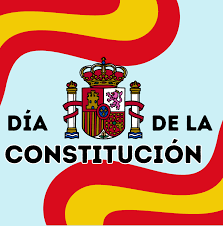
[image courtesy of Calendarr]
Links:
Día de la Constitución – what a disappointment!
The Curmudgeon
Día de la Constitución (España) - Wikipedia, la enciclopedia libre
Qué se celebra el 6 de diciembre y por qué se le llama el Día de la Constitución Española
Día de la Constitución Española, en directo los actos | Vídeo
© The History Man
Pix:
Calendarr, El Confidencial, El Mundo, Paul Whitelock
Thanks:
BBC, La 1, RNE, RTVE, Sky News, Wikipedia
Tags:
1975. 1978, 47, 88%, Alfonso XIII, back-handers, Civil War, constitution, corruption, democracy, dictator, dictatorship, Don Juan Carlos de Borbon y Borbon, extra-marital affairs, Felipe, Franco, Juan Carlos, Magna Carta, Paul Whitelock, referendum, republic, Rey Emerito, Rey Felipe VI, The Curmudgeon, The History Man,
 1
Like
Published at 4:55 PM Comments (0)
1
Like
Published at 4:55 PM Comments (0)
The Truth About Franco
Sunday, November 30, 2025
 At the time of the 50th anniversary of the death of Franco - he died on 20th November 1975 - I can't believe how many positive articles are being posted about the Franco years. The most worrying thing is that young people who weren't even born, are hankering after better times and they think those were under Franco. At the time of the 50th anniversary of the death of Franco - he died on 20th November 1975 - I can't believe how many positive articles are being posted about the Franco years. The most worrying thing is that young people who weren't even born, are hankering after better times and they think those were under Franco.
[BBC]
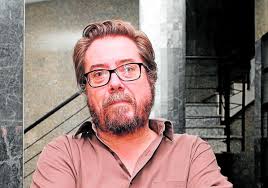 Troy Nahumko, Canadian, is a freelance writer, teacher and teacher trainer, living in Caceres, Extremadura. Troy Nahumko, Canadian, is a freelance writer, teacher and teacher trainer, living in Caceres, Extremadura.
Writing in SUR in English on November 28th, Troy tells us:
[Hoy]
"..... in today's Spain, a curious myth has seeped into the groundwater: that 'under Franco we lived better'. Astonishingly, a chunk of Spaniards under 24 hold the view that a cheerless, censorious dictatorship, the political equivalent of poison ivy, was a golden age of prosperity and serenity."
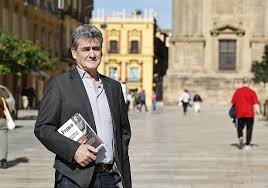 Giles Tremlett, biographer, historian and journalist has lived in Madrid for 30 years. In an interview with Diario Sur's Regina Sotorrío to mark the publication of his new book 'Franco: The Dictator Who Shaped a Country', the Englishman says: Giles Tremlett, biographer, historian and journalist has lived in Madrid for 30 years. In an interview with Diario Sur's Regina Sotorrío to mark the publication of his new book 'Franco: The Dictator Who Shaped a Country', the Englishman says:
[Diario Sur]
"[The secret of Franco's success] ..... is based on three things. One is that he's not as mediocre as he's made out to be. Intellectually, yes, but in terms of command, of political manoeuvering, not at all. Secondly, he's an incredibly ambitious character. It's not that he wanted power, he wanted all the power, forever. And thirdly, a military man doesn't need charisma. If I'm a general, it doesn't matter that I'm short with a high-pitched voice, everyone has to bow down before me. Military charisma is all about here (he taps his shoulder, where rank and medals would be on show) and it doesn't matter what you look like."
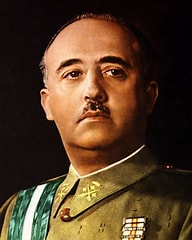 I am a keen student of Spanish history and its politics, and I regard myself as well-informed about the Civil War and the Franco dictatorship. I am a keen student of Spanish history and its politics, and I regard myself as well-informed about the Civil War and the Franco dictatorship.
I experienced five years living in Spain under Franco, and then another five decades after the country transformed into a democracy. I have owned property here since 2001 and emigrated here in 2008.
[Wikipedia]
So, I have experienced the austerity and lack of freedom of Franco's brutal fascism, as well as the difficult early years of the Transition.
 Spain joining the EU made a huge difference as the country qualified for massive grants for infrastructure projects, as well as educational exchanges and study visits. Spain joining the EU made a huge difference as the country qualified for massive grants for infrastructure projects, as well as educational exchanges and study visits.
[European Commission]
  I've read both George Orwell and Ernest Hemingway and enjoyed what they wrote about that period of Spain's history. I've read both George Orwell and Ernest Hemingway and enjoyed what they wrote about that period of Spain's history.
But, let's face it, both were flawed personalities, so their literary legacies are questionable to say the least.
Orwell had psychological problems and Hemingway shot himself.
Orwell [Wikipedia] His only book about the Civil War [Amazon]
 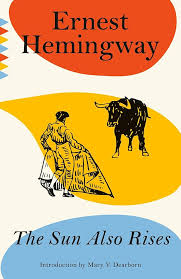 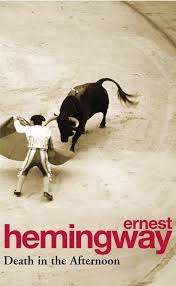 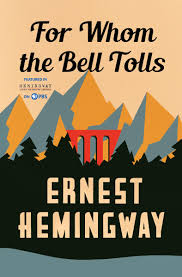
Hemingway [Acento] Important works by Hemingway [Amazon]
What do I think of Franco?
For me, 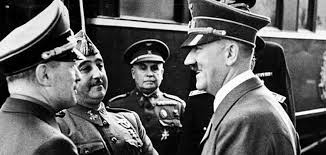 he was arguably worse than Hitler and Mussolini, his fascist contemporaries. he was arguably worse than Hitler and Mussolini, his fascist contemporaries.
Mussolini was a joke, strung up by his own people, and Hitler committed suicide.
L to R: Mussolini, Franco, Hitler [La Hora Digital]
Franco carried on and died a natural death in 1975, aged 82.
From 1939 until 1975 he continued to murder dissidents.
 The man was despicable, but, because he had the support of the Catholic Church, the Army and the landed gentry, gained a certain kudos. The man was despicable, but, because he had the support of the Catholic Church, the Army and the landed gentry, gained a certain kudos.
Spain's transformation to a constitutional monarchy and full democracy has happened in double quick time, rather remarkably.
Don Juan Carlos and Franco [Libertad Digital]
My Spanish neighbours, olive growers, wine-makers and livestock farmers, were socialist for seven decades since the Civil War ended. Lately they have switched to PP. Unbelievable!
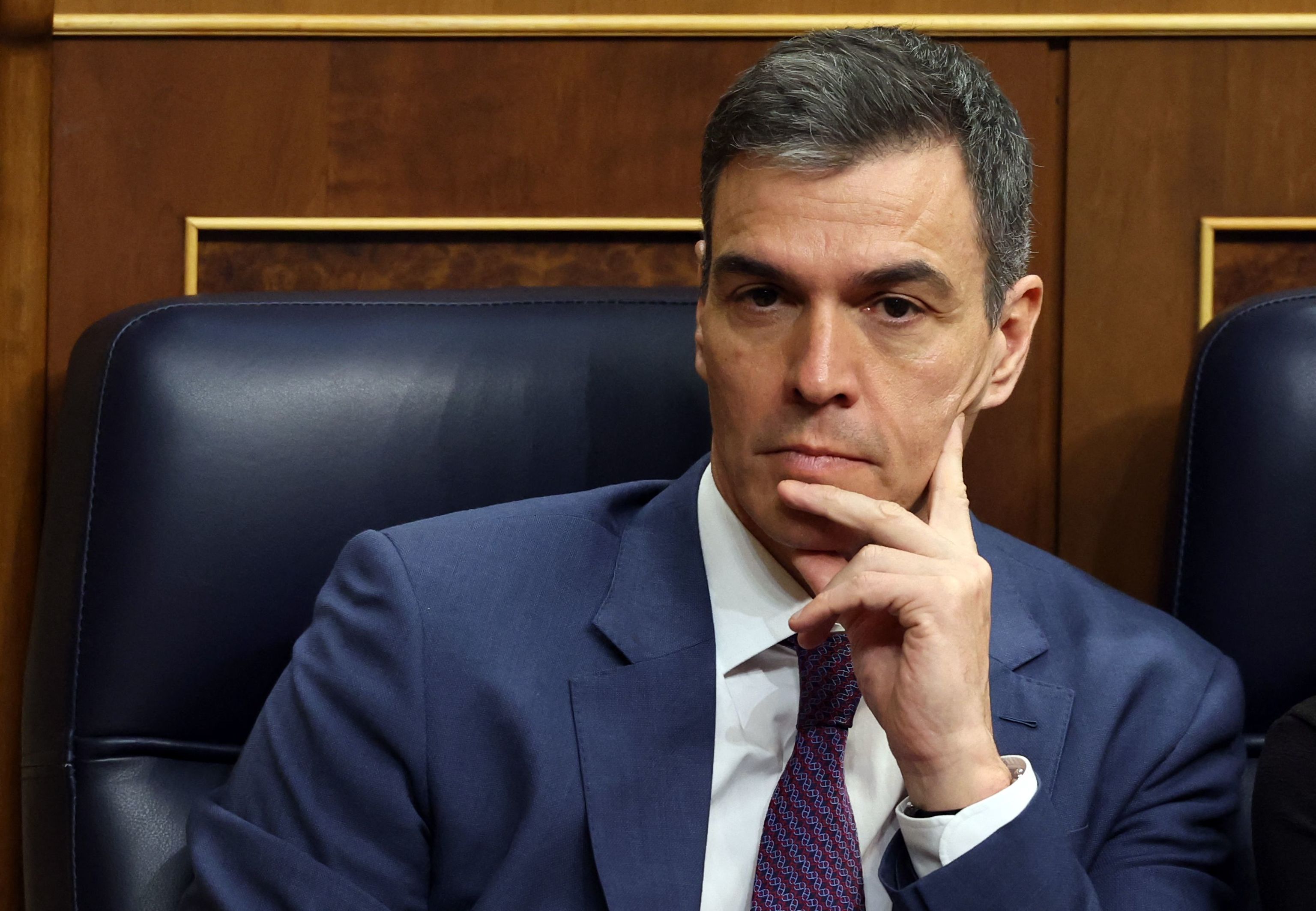 I am just about the only supporter of the current government of Pedro Sanchez around these parts. The Spanish prime minister is smart, intelligent, and young. I am just about the only supporter of the current government of Pedro Sanchez around these parts. The Spanish prime minister is smart, intelligent, and young.
He is also a fluent English-speaker, unlike all of his predecessors. I reckon he is the best PM Spain has had since democracy began. All the others were flawed/corrupt/inept.
[El Mundo]
Second best? Probably Felipe Gonzalez.
But, this is only my opinion .....
 John Collins, in a letter to the editor of SUR in English, wrote that he came to Spain for the first time in 1967 to study in Barcelona. John Collins, in a letter to the editor of SUR in English, wrote that he came to Spain for the first time in 1967 to study in Barcelona.
"The atmosphere in the city was tense. ..... I left after a while for Madrid, a different world, very much Generalisimo territory."
[Facebook]
Collins met and married a Spanish lady from a family of franquistas. With this intimate insight he has formed a different view to many of us British folk.
"Franco certainly ruled with an iron fist, but whether he was really a dictator is another question ..... The thing about living in Spain during Franco is there were three things, discipline, courtesy and security. Sadly all three have disappeared in modern Spain."
Collins spends much less time in Spain now "..... than I did when the Generalisimo was here."
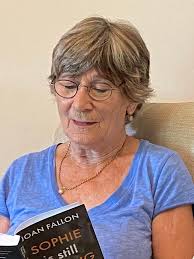 Axarquía resident Joan Fallon, the author of "Daughters of Spain" (a series of frank interviews giving a dramatic picture of what it was like to be a woman living in Spain under Franco's regime), said she believes children of today should learn about what life was like in the dictatorship. Axarquía resident Joan Fallon, the author of "Daughters of Spain" (a series of frank interviews giving a dramatic picture of what it was like to be a woman living in Spain under Franco's regime), said she believes children of today should learn about what life was like in the dictatorship.
"History is about people and their lives: I believe that young Spaniards deserve to know why such a war would break out in the first place and what kind of lives their great-grandparents lived before, during and afterwards.
[Facebook]
"The civil war and the dictatorship are vital parts of Spanish history and should not be withheld from youngsters because those years will subsequently have had an affect on their lives. How can the youth of today understand their country if this period of their history is withheld from them?" she asked.
Malaga resident Juan Jiménez, whose father was a staunch Franco supporter, said that he believed that, "as bad as it was", it should never be forgotten.
"This was a terrible era of Spain's history, but it is our history and it cannot be ignored," he said.
Daniel González, whose grandfather died during the conflict, disagreed, saying "it is time to forget". "Why do we have to keep dragging the Franco atrocities up. He is dead and should be left that way. Educating youngsters is one thing, but holding events to mark the death of this dictator is absurd," he said.
© The History Man
Links:
50 Years After Franco’s Death, Spain Confronts Its Dark Past | TIME
British author and Hispanist Giles Tremlett speaks out on Franco on 50th anniversary of Spanish dictator's death | Sur in English
Fifty years on | Sur in English
Franco dead 50 years!
Giles Tremlett, hispanista: «El desconocimiento de Franco hace que sea un debate de blanco o negro, no hay matices» | Diario Sur
Should Franco fade into a mere footnote in Spanish history? | Sur in English
The great Franco revival circus | Sur in English
Images:
Acento, Amazon, BBC, Diario Sur, El Mundo, European Commission, Facebook, Hoy, La Hora Digital, Libertad Digital, Wikipedia
Thanks:
Daniel González, Giles Tremlett, Joan Fallon, Juan Jiménez, Liz Parry, SUR in English, TIME magazine, Tony Bryant, Troy Nahumko
Tags:
Acento, Amazon, BBC, "Daughters of Spain", Diario Sur, El Mundo, European Commission, Facebook, Hoy, La Hora Digital, Libertad Digital, Paul Preston, TIME magazine, Wikipedia
 1
Like
Published at 5:51 PM Comments (7)
1
Like
Published at 5:51 PM Comments (7)
50 years ago today since Franco's death
Thursday, November 20, 2025
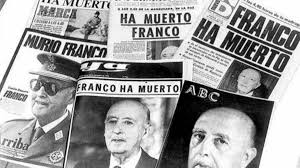 Today is the 50th anniversary of the death of the Spanish dictator General Franco. Today is the 50th anniversary of the death of the Spanish dictator General Franco.
On November 20th November 1975 it was announced that the man who had ruled Spain with an iron fist for 38 years had passed away in his sleep.
The Spanish Press announces Franco's death [Photo composition: X]
Franco had been in charge since the military coup which toppled the elected Republican government of the day and led to a bloody civil war (1936-1939).
The conflict and its aftermath claimed en estimated 500,000 lives.
What the Press and media are saying
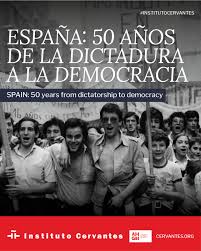 According to the national broadcaster rtve.es Spain passed from being an authoritarian regime to a full democracy, where freedom of expression, equality and diversity are an integral part of daily life. According to the national broadcaster rtve.es Spain passed from being an authoritarian regime to a full democracy, where freedom of expression, equality and diversity are an integral part of daily life.
The dictatorship was characterised by political and cultural repression, a lack of freedom of speech and the persecution of dissidents.
Franco's death marked the end of this time and the beginning of a new political era which culminated in the approval of a new constitution in 1978 and the consolidation of democracy in Spain.
[Instituto Cervantes]
Yet today there is a generation of young people who identify with Francoist principles and defend the regime.
Some experts claim that young people "lack solid and verified information and knowledge" about Francoism.
Radio Nacional de España (RNE) posed the question: What is left of Franco after 50 years?
 Their reporter Mar Lupion wrote earlier today on Facebook that vestiges of Francosism are alive and well in Spanish society. Their reporter Mar Lupion wrote earlier today on Facebook that vestiges of Francosism are alive and well in Spanish society.
According to the Centro de Investigaciones Sociológicas (CIS), about 20% of Spaniards between the ages of 18 and 24 consider the dictatorship to have been "good or very good".
This nostalgia for a historical period they didn't experience can be explained by several factors.
[Photo courtesy of Wikipedia]
Alina Danet, a sociologist and professor of Political Science at the University of Granada, maintains that young people "lack solid and reliable information and knowledge" about the Franco regime. This is because, after Franco's death, the dictatorship was "little discussed" in Spain.
Furthermore, young people feel that their generation has suffered a loss of status compared to their parents and grandparents.
Social media acts as a catalyst for the spread of hoaxes and myths about the Franco regime through trends that use elements of contemporary culture, such as memes, music, and manipulated videos, in a phenomenon known as "pop fascism".
Within this breeding ground, "historical revisionism" - the movement that revisits the dictatorship with the collaboration of journalists, essayists, and historians - plays a pre-eminent role.
Franco, from renowned military man to dictator for almost 40 years
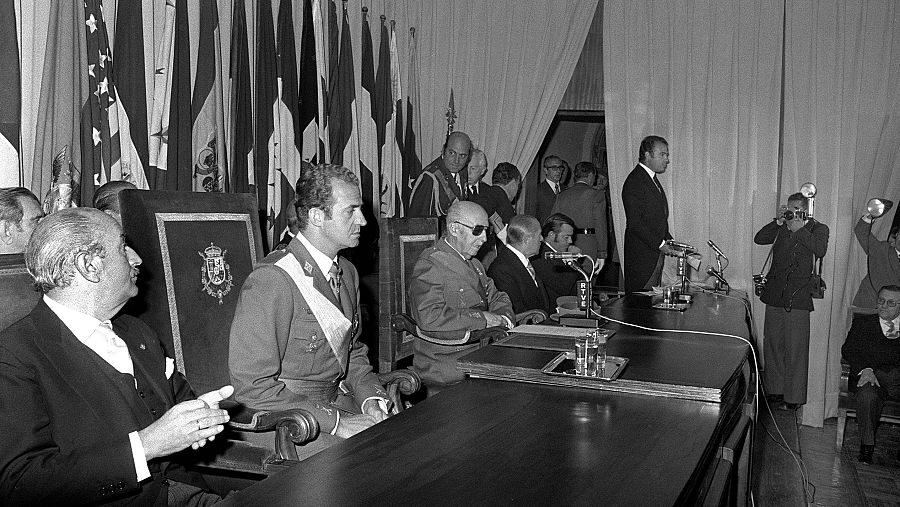
Franco died on November 20, 1975, and was succeeded two days later by King Juan Carlos I, who assumed all the powers of the State:
He was head of government, head of state, and commander-in-chief of the Armed Forces.
Last ever photo of Franco 12 Oct 1975 [EFE/SVB]. To his right is Don Juan Carlos de Borbon, Franco's nominated successor
Mª Carmen Cruz Martín explains: "With the victory of the so-called Nationalists, Francisco Franco established a military dictatorship in Spain and ruled the country with an iron fist for almost four decades, between 1939 and 1975."
Who was Francisco Franco?
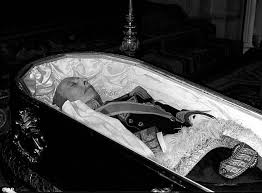 Francisco Franco Bahamonde was head of state until the day of his death, on November 20, 1975; head of government until 1973, when he handed over that baton of command to Carlos Arias Navarro, and commander-in-chief of the Armed Forces. Francisco Franco Bahamonde was head of state until the day of his death, on November 20, 1975; head of government until 1973, when he handed over that baton of command to Carlos Arias Navarro, and commander-in-chief of the Armed Forces.
On coins of that era, he was depicted as "Leader of Spain by the Grace of God."
[Photo: The Daily Mail]
He was part of the military leadership that staged the 1936 coup against the government of the Second Republic, which subsequently led to the Civil War.
For three years, Spain was embroiled in a conflict that divided the country into two factions. With the victory of the Nationalist faction on April 1, 1939, Franco took over all state powers.
Military Career
 Born in Ferrol (A Coruña) in 1892 into a middle-class family, Francisco Franco was the second of five children. Born in Ferrol (A Coruña) in 1892 into a middle-class family, Francisco Franco was the second of five children.
Following in his father's military footsteps, Franco entered the Infantry Academy of Toledo in 1907.
His military career was marked by the Rif War in Morocco, where he was stationed between 1912 and 1926.
He was head of the Legion, and in 1926 he was promoted to Brigadier General, becoming the youngest general in Europe. In 1935, he was appointed Chief of the General Staff.
[Photo: Wikipedia]
Following the Popular Front's victory in the February 1936 elections, the government removed generals suspected of plotting a coup, and Franco was subsequently assigned to the Canary Islands.
In July 1936, he joined the coup d'état known as the National Uprising, led by Generals José Sanjurjo and Emilio Mola, who were dissatisfied with the Second Republic and desired a more conservative and religious Spain.
The coup d'état began when the military garrisons of Ceuta, Melilla, and Tetouan rebelled against the Second Republic.
Although the coup failed in cities like Madrid and Barcelona, a Civil War ensued with two sides: the Republicans - defenders of the Republic and comprised of left-wing parties - and the rebels, also known as the Nationalists - made up of right-wing parties, the bourgeoisie, and anti-republican military officers.
More than half a million people from both sides would die in the conflict.
Soon, Franco became the leader of the rebels, and on October 1, 1936, he was proclaimed head of state and caudillo (leader) of Spain.
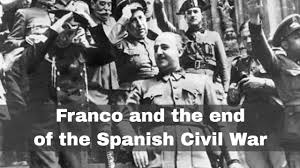
[Youtube]
 The Civil War in Spain served as a rehearsal for the Axis powers for World War II. Franco's side received support from Adolf Hitler's Nazi Germany and Benito Mussolini's Fascist Italy, which helped Franco to achieve significant victories in key battles. The Civil War in Spain served as a rehearsal for the Axis powers for World War II. Franco's side received support from Adolf Hitler's Nazi Germany and Benito Mussolini's Fascist Italy, which helped Franco to achieve significant victories in key battles.
Mussolini, Franco and Hitler [La Hora Digital]
[Ed: the bombing by the German Luftwaffe of Guernica near Bilbao being the best example]
Finally, on April 1, 1939, Franco announced from the city of Burgos that the war had ended after having "defeated the Red Army" and "the nationalist troops having achieved their final military objectives".
The Franco Dictatorship
At the end of the Civil War, Franco took over all the powers of the State and established a military dictatorship, characterized by censorship and repression of those who were against the new regime, the curtailment of rights and freedoms, total control of the State and a policy of international isolation during the first years of his government.
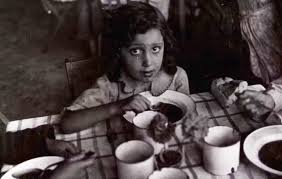 Precisely because of this international isolation and the economic difficulties the country faced in the postwar period, the early years of the dictatorship were marked by famine. To confront the economic crisis, an autocratic regime was established, an economic system based on an attempt at self-sufficiency. Precisely because of this international isolation and the economic difficulties the country faced in the postwar period, the early years of the dictatorship were marked by famine. To confront the economic crisis, an autocratic regime was established, an economic system based on an attempt at self-sufficiency.
Post-war hunger [The Olive Press]
However, food shortages were widespread, and in response, a rationing system was introduced to control available food and prevent hoarding. Each person was allocated a specific quantity of products.
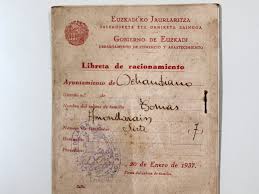 So, on May 14, 1939, the Franco regime pioneered the ration book, which specified the quantity and type of goods to which each Spaniard was entitled. This system remained in place until June 1, 1952. So, on May 14, 1939, the Franco regime pioneered the ration book, which specified the quantity and type of goods to which each Spaniard was entitled. This system remained in place until June 1, 1952.
Alongside the economic problems, the repression against the defeated led many people to go into exile abroad. Those who remained in the country and did not support Franco's regime began to suffer harsh controls. Many were imprisoned, and many others were executed.
Spanish post-Civil War ration book [Dreamstime]
In fact, Franco's regime was signing death warrants until very shortly before the dictator's death. Less than two months before Franco died, five members of the Basque Terrorist Group ETA (Euskadi Ta Askatasuna) and the communist FRAP (Frente Revolucionario Antifascista y Patriota) were executed.
Political parties were banned, and only the Falange Española Tradicionalista and the Juntas de Ofensiva Nacional Sindicalista (FET y de las JONS) were permitted. Linguistic and sexual diversity were persecuted, and women lost rights they enjoyed during the Republic, as they were required to be under "male guardianship" during the Franco regime.
Franco's dictatorship was heavily influenced by Catholicism, and the Church played a significant role in the regime.
And although Spain declared itself neutral in World War II, Franco had a close relationship with Hitler and Mussolini.
Precisely because of this proximity to European fascist regimes, Spain found itself isolated internationally after the end of World War II.
During the Cold War, it managed to partially emerge from this isolation thanks to its rapprochement with the Western bloc and because of its opposition to the Soviet bloc.
The Succession
And although Francoism began its decline on November 20, 1975,  with the death of the dictator, its end had begun to take shape years earlier. with the death of the dictator, its end had begun to take shape years earlier.
In 1969, Franco had named as his successor the Infante Juan Carlos - who would later become King Juan Carlos I - son of the legitimate heir to the throne, Don Juan de Borbón, and grandson of the late Alfonso XIII, the last monarch before the Second Republic.
The young Juan Carlos [Getty Images]
With his oath before the Cortes, Juan Carlos became Prince of Spain on July 22, 1969.
In June 1973, Franco appointed Admiral Luis Carrero Blanco as head of the government, but in December of that same year, he was assassinated in an ETA attack in Madrid.
Finally, the dictator decided to appoint Carlos Arias Navarro as Prime Minister.
In the months leading up to his death, Franco suffered from various illnesses. While he was ill, on a couple of occasions, Juan Carlos assumed the role of Acting Head of State. The first was on July 9, 1974, when the dictator was hospitalized for treatment of phlebitis. The second was in October 1975, after Franco fell ill and suffered several heart attacks until he finally died on November 20.
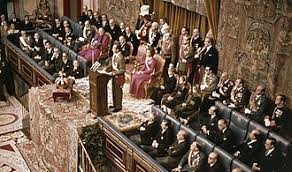 King Juan Carlos was sworn in before the Cortes on November 22. Following Franco's death, Spain underwent a period known as the Transition, which led the country to become a parliamentary monarchy, hold its first democratic elections in over 40 years in 1977, and adopt a Constitution in 1978. King Juan Carlos was sworn in before the Cortes on November 22. Following Franco's death, Spain underwent a period known as the Transition, which led the country to become a parliamentary monarchy, hold its first democratic elections in over 40 years in 1977, and adopt a Constitution in 1978.
Juan Carlos is sworn in as king [Wikipedia]
Last Word
I have strong feelings about Franco. When I first came to Spain in 1970, to San Sebastian (Gipuzkoa) I fell in love with the country, the people and the lifestyle, despite Franco still being in control.
I studied Spanish to honours degree level and obviously got to learn more about Franco's murderous and vindictive regime.
I despise the man and what he stood for. He is arguably as bad as Hitler and Mussolini were, yet he was the only one of that deadly trio who died a natural death. Hitler committed suicide in his Berlin bunker and Mussolini was strung up by his own people.
I find it right that Franco has been thoroughly discredited and that the Spanish government is trying to erase all traces of him.
"Franco is dead!" Let's leave it at that!
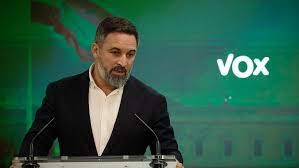 But Spain needs to be wary of VOX, the right wing extremist party, and the ridiculous behaviour of many young Spaniards in wishing for a return to an evil, repressive Spain that they never knew! Spain was NOT better under Franco! But Spain needs to be wary of VOX, the right wing extremist party, and the ridiculous behaviour of many young Spaniards in wishing for a return to an evil, repressive Spain that they never knew! Spain was NOT better under Franco!
Santiago Abascal of VOX [Photo: VOX]
© The History Man
Photos:
ABC, BBC, Diario de Sevilla, Dreamstime, Getty Images, Instituto Cervantes, La Hora Digital, SVB, The Guardian, The Olive Press, Wikipedia, Youtube, VOX, X
Acknowledgements:
Sources: Alina Danet, EFE, Mª Carmen Cruz Martín, Mar Lupion, MSN, Paul Whitelock, RNE, rtve.es, Wikipedia
Translations: Paul Whitelock
Tags:
1936-1939, 1978, 500,000 lives, ABC, Adolf Hitler, Alina Danet, authoritarian regime, Benito Mussolini, bloody civil war, BBC, CIS, Centro de Investigaciones Sociológicas, constitution, democracy, Diario de Sevilla, dictatorship, diversity, Dreamstime, EFE, equality, Francoism, Francoist, freedom of expression, freedom of speech, full military coup, Getty Images, "historical revisionism", Instituto Cervantes, La Hora Digital, Mª Carmen Cruz Martín, Mar Lupion, MSN, Paul Whitelock, persecution of dissidents, political and cultural repression, "pop fascism", professor of Political Science, RNE, Radio Nacional de España, Republican government, sociologist, SVB, The Guardian, The Olive Press, University of Granada, Wikipedia, Youtube, VOX, X
 1
Like
Published at 9:52 PM Comments (3)
1
Like
Published at 9:52 PM Comments (3)
Franco dead 50 years!
Monday, November 17, 2025
 Generalisimo Francisco Franco Bahamonde, the fascist dictator who led Spain for 39 years, from 1936 until his death in 1975, "celebrates" the 50th anniversary of his death later this week, on Thursday November 20th. Generalisimo Francisco Franco Bahamonde, the fascist dictator who led Spain for 39 years, from 1936 until his death in 1975, "celebrates" the 50th anniversary of his death later this week, on Thursday November 20th.
He will not be mourned by many. He has been thoroughly discredited for his murderous "reign".
[Photo courtesy of Wikipedia]
According to a recently passed law, all statues and memorials should have been torn down. Streets, barrios and squares should have been re-named and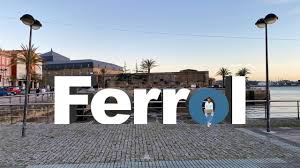 town names which refer to him have been required to drop the reference to him, eg his birthplace, until recently known as El Ferrol del Caudillo, is now just plain old El Ferrol. town names which refer to him have been required to drop the reference to him, eg his birthplace, until recently known as El Ferrol del Caudillo, is now just plain old El Ferrol.
[La Voz de Galicia]
His body has been removed from the mausoleum he had built to honour the nationalist dead, Valle de los Caidos, and has been re-interred elsewhere, alongside his widow.
Franco and I
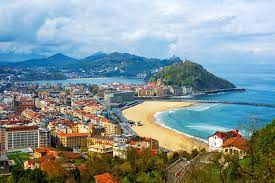 I never met him, of course, but, for the last five years of his life, I was in San Sebastian (Guipuzcoa), his choice of summer holiday destination. I never met him, of course, but, for the last five years of his life, I was in San Sebastian (Guipuzcoa), his choice of summer holiday destination.
The Basque seaside resort filled with Franco's stormtroopers before, during and after his annual stay. These were the dreaded and, back then, brutal guardia civil.
San Sebastian [The Independent]
The Basque language, euskera, was banned at that time.
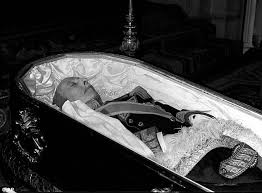 We were well into the Autumn Term at the Roman Catholic Grammar School where I was Head of Spanish, when one morning our Spanish assistant from Valencia, Vicente, came in all smiles. We were well into the Autumn Term at the Roman Catholic Grammar School where I was Head of Spanish, when one morning our Spanish assistant from Valencia, Vicente, came in all smiles.
Franco was dead, at last. Vicente immediately changed his name to Vicent, his real name in the banned Valenciano dialect.
[Daily Mail]
Franco's legacy
General Franco was chosen to lead the military coup that unseated the legitimate republican government of Spain over the course of a brutal civil war which tore the country to bits.
After the war, Franco and Spain were isolated from the rest of Europe. Their only allies were the USA, who took advantage to set up a major military base and nuclear facility in Rota (Cádiz).
 The Caudillo paved the way for the restoration of the monarchy by nominating Juan Carlos de Borbon y Borbon as his successor. The Caudillo paved the way for the restoration of the monarchy by nominating Juan Carlos de Borbon y Borbon as his successor.
On Franco's death he became King Juan Carlos I and led the way to restoring democracy to Spain, something Franco would not have expected.
There is a claim that Franco set up the Paradores hotel chain, whereby ancient monuments were restored and turned into quality hotels, but that may be an urban myth.
I liked and fell in love with Spain under Franco's rule, but, let's be honest, the country is better now.
Democracy, equal opportunities, contraception, divorce, gay marriage, and smoking bans have all come into force in the last five decades.
And, according to recent press reports, Spain has the second most successful economy in the world after Singapore.
Final comment
Some of my neighbours - andaluces - wish he was still around. Most weren't even born when he was in power.
What is the matter with these people?
They would rather have VOX and/or PP with the dangerous Santiago Abascal or the inept Alberto Nuñez Feijoo, instead of the young, virile, intelligent, English-speaking socialist Pedro Sanchez, arguably the best prime minister Spain has had since Franco's demise.
 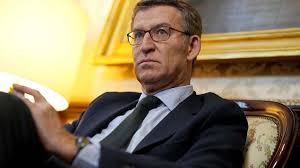 
Santiago Abascal [Vox] Alberto Nuñez Feijoo [El Periodico] Pedro Sanchez [El Mundo]
I rest my case.
© The History Man
Pictures:
ABC, Daily Mail, El Mundo, El Periodico, La Voz de Galicia, Libertad Digital, The Independent, VOX, Wikipedia
Acknowledgements:
Diario Sur, Malaga Hoy, Paul Whitelock, Wikipedia
Tags:
1975, ABC, Alberto Nuñez Feijoo, Civil War, Daily Mail, Diario Sur, El Ferrol, El Mundo, El Periodico, Franco, Juan Carlos I, La Voz de Galicia, Libertad Digital, Malaga Hoy, monarchy, paradores, Paul Whitelock, Pedro Sanchez, November 20th, Rota, San Sebastian, Santiago Abascal, The History Man, The Independent, USA, Valle de los Caidos, VOX, Wikipedia
 0
Like
Published at 10:21 AM Comments (2)
0
Like
Published at 10:21 AM Comments (2)
Remembrance Day
Sunday, November 9, 2025
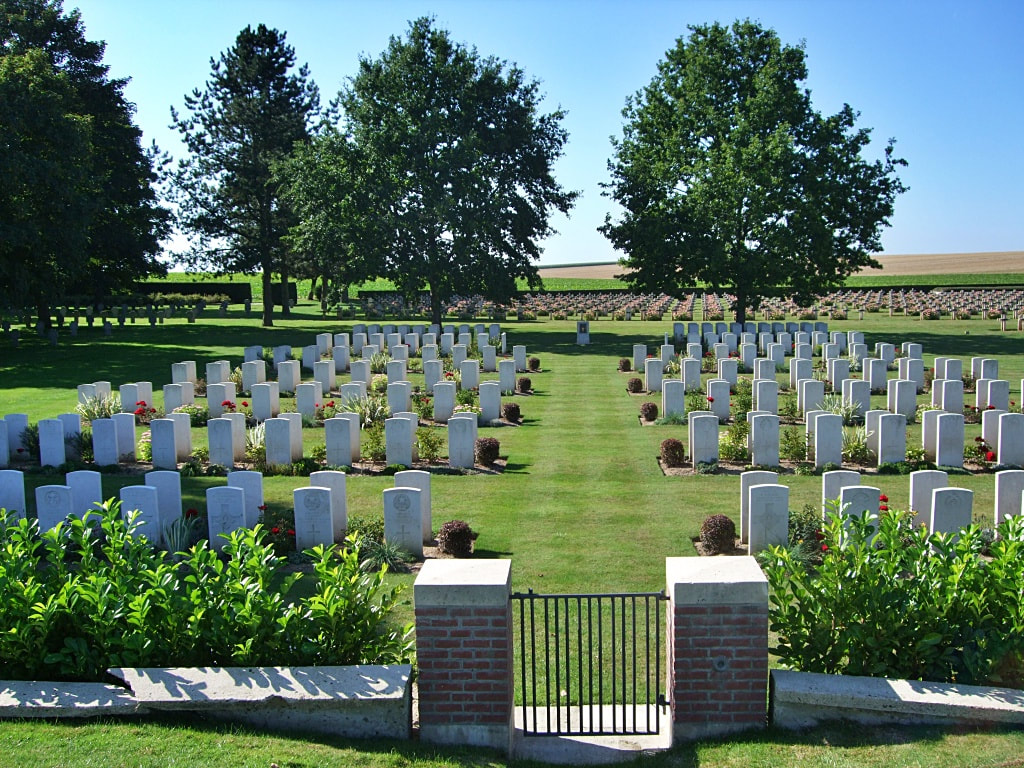 Remembrance Day (also known as Poppy Day owing to the tradition of wearing an artificial poppy) is a memorial day observed in Commonwealth member states since the end of the First World War. This day honours armed forces members who died in the line of duty. Remembrance Day (also known as Poppy Day owing to the tradition of wearing an artificial poppy) is a memorial day observed in Commonwealth member states since the end of the First World War. This day honours armed forces members who died in the line of duty.
War grave in Northern France [WW1 Cemeteries]
The day is also marked by war remembrances in several other non-Commonwealth countries.
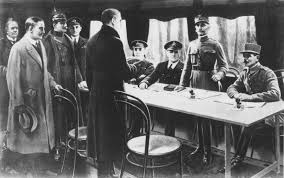 In most countries, Remembrance Day is observed on 11 November to recall the end of First World War hostilities. Hostilities ended "at the 11th hour of the 11th day of the 11th month" of 1918, in accordance with the Armistice signed by representatives of Germany and the Allied countries. The First World War formally ended with the signing of the Treaty of Versailles on 28 June 1919. In most countries, Remembrance Day is observed on 11 November to recall the end of First World War hostilities. Hostilities ended "at the 11th hour of the 11th day of the 11th month" of 1918, in accordance with the Armistice signed by representatives of Germany and the Allied countries. The First World War formally ended with the signing of the Treaty of Versailles on 28 June 1919.
Signing the Armistice [Britannica]
The origins
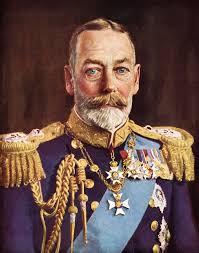 The initial Armistice Day was observed at Buckingham Palace, commencing with King George V hosting a "Banquet in Honour of the President of the French Republic" during the evening hours of 10 November 1919. The initial Armistice Day was observed at Buckingham Palace, commencing with King George V hosting a "Banquet in Honour of the President of the French Republic" during the evening hours of 10 November 1919.
The first official Armistice Day was subsequently held on the grounds of Buckingham Palace the following morning.
During the Second World War, many countries changed the name of the holiday. Member states of the Commonwealth of Nations adopted Remembrance Day, while the US chose the name Veterans Day.
King George V [Discover Britain]
United Kingdom
In the United Kingdom, the main observance is Remembrance Sunday, held on the Sunday nearest to 11 November. There is a National Service of Remembrance in London, as well as other services and ceremonies in the regions.
 Typically, poppy wreaths are laid by representatives of the Crown, the armed forces, and local civic leaders, as well as by local organisations including ex-servicemen organisations, cadet forces, the Scouts. Guides, Boys' Brigade, St John Ambulance and the Salvation Army. Typically, poppy wreaths are laid by representatives of the Crown, the armed forces, and local civic leaders, as well as by local organisations including ex-servicemen organisations, cadet forces, the Scouts. Guides, Boys' Brigade, St John Ambulance and the Salvation Army.
A two minutes' silence is also frequently incorporated into church services.
Poppy wreaths at the Cenotaph in London [BBC]
A personal note
 As a Scout Cub and later a Scout I was involved in Remembrance Day parades annually from a young age. As a Scout Cub and later a Scout I was involved in Remembrance Day parades annually from a young age.
Now, 60-odd years later, this date has become significant for me once again what with devastating wars and conflicts taking place throughout the world.
[BBC]
 Despite living in Spain, which does not commemorate the two World Wars, the country not having been involved in either war (officially!), I managed to get hold of a poppy following an appeal on Facebook ("Thanks, Fran!"). Despite living in Spain, which does not commemorate the two World Wars, the country not having been involved in either war (officially!), I managed to get hold of a poppy following an appeal on Facebook ("Thanks, Fran!").
I shall wear my poppy with pride today.
Yours truly this morning [selfie]
© The History Man
Images:
Britannica, BBC, Discover Britain, Paul Whitelock, WW1 Cemeteries
Acknowledgements:
Paul Whitelock, The History Man, Wikipedia
Tags:
armed forces, armistice, Boys Brigade, Britannica, BBC, cadet force, Commonwealth, cub scout, Discover Britain, First World War, Paul Whitelock, poppy, Poppy Day, remembrance day, St John Ambulance, Salvation Army, scout, scout cub, two minutes' silence, Wikipedia, WW1 Cemeteries
 0
Like
Published at 9:39 AM Comments (0)
0
Like
Published at 9:39 AM Comments (0)
11.11 on the 11/11
Friday, October 31, 2025
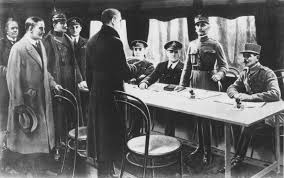 This was when the armistice which ended the First World War was signed, at 11 minutes past 11.00 am on the 11th November, 1918, bringing to an official end the Great War which had claimed the lives of millions of young men from Great Britain, France, the Netherlands, Belgium, Germany, Poland, Russia as well as from Australia, Canada, New Zealand, South Africa and other Commonwealth countries. This was when the armistice which ended the First World War was signed, at 11 minutes past 11.00 am on the 11th November, 1918, bringing to an official end the Great War which had claimed the lives of millions of young men from Great Britain, France, the Netherlands, Belgium, Germany, Poland, Russia as well as from Australia, Canada, New Zealand, South Africa and other Commonwealth countries.
The signing of the armistice in 1918 [Britannica]
 Curiously, this date is when the German Festival "Fasching" starts. This is an extravaganza of booze, debauchery, fancy dress, live music and stalls selling Bratwurst, Hamburger, Pommes (chips) and tacky souvenirs and craft products. Curiously, this date is when the German Festival "Fasching" starts. This is an extravaganza of booze, debauchery, fancy dress, live music and stalls selling Bratwurst, Hamburger, Pommes (chips) and tacky souvenirs and craft products.
[Photo: deutschland.de]
Me and this date
 I value the significance of Remembrance Sunday, which is the nearest Sunday to 11th November. I value the significance of Remembrance Sunday, which is the nearest Sunday to 11th November.
In England I took part from a young age, as a Cub Scout and later as a Scout, sometimes having the honour of bearing the flag of our troupe.
As an adult I sometimes attended the outdoor event in my town. If not, I would turn on the TV at 11.00 am to watch the ceremony at the Cenotaph in London.
Cub scouts on Remembrance Day [unattributed]
I always wore a poppy.
Since I've lived in Spain (17 years) I always tuned in to the BBC coverage on the telly. This year I decided I wanted to sport a British Legion poppy. I placed a message on WhatsApp asking if it was possible to get a poppy here in Spain.
I got lots of helpful replies, as a result of which I have a delightful hand-made poppy and a standard cellulose version is also on the way.
There are a number of places on the coast and in Gibraltar where they are available, too.
"Fasching"
This rather Bacchanalian festival in Germany is also enjoyable, although it has nothing to do with war (well, Germany lost both, didn't they!).
The most memorable Fasching for me was in 2003 when my daughter Amy was dispatched to Cologne for her compulsory year abroad (she studied German at Oxford), and she asked me to go with her to help her find accommodation.
 Well, we managed that in double quick time. Our time in Cologne coincided with Fasching, so off we went, my 20-year-old daughter and me, her 53-year-old dad. Well, we managed that in double quick time. Our time in Cologne coincided with Fasching, so off we went, my 20-year-old daughter and me, her 53-year-old dad.
Well, what fun we had! We drank far too much beer (I brought my daughter up to appreciate the good things in life!). But the best thing was, one of my favourite groups back then, Londonbeat, were performing in the open air. They were sensational.
[Youtube]
Endword
I shall proudly wear my "poppy" up until Remembrance Sunday. I shan't be going to Fasching in Germany, but I'll definitely pop "Londonbeat" on the stereo - for old times' sake!
Links
I've Been Thinking About You - LONDONBEAT @ZDF-Fernsehgarten - 05/06/2016
Londonbeat - I've Been Thinking About You (Official Video) [4K Remastered]
© The History Man (Paul Whitelock)
Pictures:
Britannica, deutschland.de, Youtube, ZDF-Fernsehgarten,
Tags:
armistice, Australia, Belgium, Bratwurst, Britannica, British Legion, Canada, Cenotaph, Cologne, Commonwealth countries, cub scout, deutschland.de, Fasching, First World War, France, Germany, Great Britain, Great War, Hamburger, Londonbeat, Netherlands, New Zealand, Paul Whitelock, Poland, Pommes, poppy, Remembrance Sunday, Russia, scout, South Africa, The History Man, Youtube, ZDF-Fernsehgarten,
 2
Like
Published at 7:42 PM Comments (0)
2
Like
Published at 7:42 PM Comments (0)
Ghosts of the Past
Monday, August 18, 2025
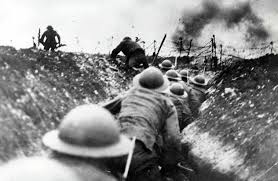 The first half of the 20th Century turned the world upside-down. The First World War, known as the Great War, cost a huge number of lives, mostly male, throughout Europe and elsewhere. That war raged from 1914-1918. The first half of the 20th Century turned the world upside-down. The First World War, known as the Great War, cost a huge number of lives, mostly male, throughout Europe and elsewhere. That war raged from 1914-1918.
Did we learn our lesson? No.
[BBC History Magazine]
The Rise of the Right
Within 15 years Fascism - Nazism - had reared its ugly head in Germany, Italy and Spain. Also in England, courtesy of Oswald Mosley and his brownshirts.
Civil War broke out in Spain and lasted from 1936-1939. A brutal conflict between Republicans and the military, led by Francisco Franco, with help from the German Luftwaffe, that resulted in massive loss of life and the murder of countless Republicans following Franco's victory.
The Generalissimo continued to rule Spain as a repressive dictatorship until his death in 1975.
Adolf Hitler, a misfit Austrian, was elected Chancellor of Germany in 1933. He soon began his crusade against Jews, gypsies, homosexuals and others deemed not to be members of the "Master Race". He introduced concentration camps of which many were death camps where an estimated six million Jews were gassed to death.
 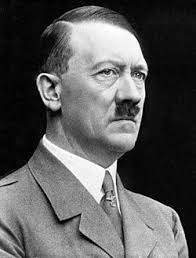 
L to R: Franco [BBC], Hitler [Wikipedia], Mussolini [RTVE.es]
Astonishingly the rest of the world looked on and did nothing.
When Hitler's troops invaded Czechoslovakia, Great Britain declared war on Germany. This was 1939. Benito Mussolini, the fascist dictator in Italy, joined in and conquered large parts of North Africa.
War also broke out in the Far East with Japan invading neighbouring countries. Their ill-judged attack on Pearl Harbor, Hawaii, in 1940, brought America into the war.
This was now a World War, which lasted until 1945 and left large parts of many countries devastated and millions dead.
Winston Churchill, Charles de Gaulle, the USA and Russia (the main allies) prevailed against Hitler and his Nazis, but at what cost to mankind?
Korea
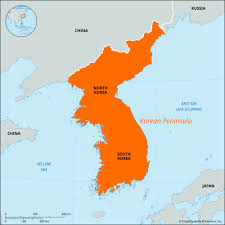 As if we hadn't had enough conflicts, North Korea, backed by China, decided to go to war with South Korea, which was supported by the United Nations and principàlly the USA. As if we hadn't had enough conflicts, North Korea, backed by China, decided to go to war with South Korea, which was supported by the United Nations and principàlly the USA.
The war began on June 25, 1950, when North Korean forces invaded South Korea, leading to a brutal conflict that resulted in at least 2.5 million casualties. The war ended in July 1953 with an armistice agreement, leaving Korea divided along the 38th parallel, a division that persists to this day.
[Map courtesy of Britannica]
Where am I going with this?
In Britain Winston became a popular Christian name. In Germany no parents have called their male offspring Adolf since the end of the war. The surname Hitler exists no more.
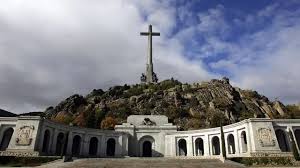 In Spain, the democratic governments since Franco's demise have gradually got round to erasing references to Franco and the dictatorship. The country is truly ashamed of that episode in its history. In Spain, the democratic governments since Franco's demise have gradually got round to erasing references to Franco and the dictatorship. The country is truly ashamed of that episode in its history.
Franco's body has been removed from the mausoleum he built, Valle de Los Caidos, and "re-interred" with his wife in a regular cemetery elsewhere. Any references to him, or his regime, street names, etc have had to be removed by law.
Valle de los Caidos [BBC]
Spain
The Spanish government of Pedro Sanchez passed a law in 2022, La Ley de Memoria Democratica.
Among its provisions was the removal of Francoist symbols from public spaces and the prohibition of celebrations of the military coup in 1936, the Civil War from 1936-1939 and the dictatorship from 1939-1975.
 Franco's birthplace, El Ferrol in Galicia, acquired the addition "del Caudillo" in honour of the fascist leader. That addition has now been removed. Franco's birthplace, El Ferrol in Galicia, acquired the addition "del Caudillo" in honour of the fascist leader. That addition has now been removed.
Streets and squares whose names referenced Franco and the Civil War, including significant dates, have been renamed.
Three years on since the law was passed, progress has been slow.
[La Voz de Galicia]
Near where I live in Malaga province in Andalucia, the town of Villafranco del Guadalhorce has recently dropped the "Franco" and henceforth will be officially known as Villa del Guadalhorce.
Yet there are still towns which are refusing to conform to the law. Alberche del Caudillo, Llanos del Caudillo, and San Leonardo de Yague are three examples.
Despite fines of 10,000 euros being applicable, none have been levied to date.
I guess this one will run and run.
Once all who lived in the time of Franco's dictatorship have died, maybe Spain can apply the law and the topic can be finally put to rest.
© The History Man
Acknowledgements:
Adam Husicka, Britannia, The History Man, The Olive Press, Paul Whitelock, Wikipedia
Photos:
Alamy, Britannica, BBC, BBC History Magazine, Freepik, La Voz de Galicia, New York Times, Wikipedia
Tags:
Adam Husicka, Alamy, Britannica, BBC, BBC History Magazine, China, Freepik, Korea, La Voz de Galicia, New York Times, North Korea, South Korea, The History Man, The Olive Press, USA, Paul Whitelock, Wikipedia
 0
Like
Published at 11:31 AM Comments (0)
0
Like
Published at 11:31 AM Comments (0)
July 7th, 2025
Tuesday, July 8, 2025
 Monday, July 7th, 2025 Monday, July 7th, 2025
What a day! Today! July 7th, 2025. Not only is it the start of the fiesta de Sanfermines in Pamplona, it's also the 20th anniversary of the London Bombings, when four suicide bombers attacked three underground trains and a London bus during the morning rush hour.
While the encierro in northern Spain is a joyous occasion, the events in London represented a colossal outrage.
[Image courtesy of WinCalendar]
Introduction
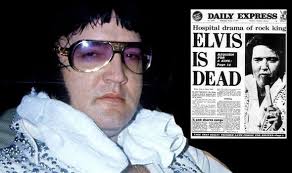 There are certain events, like the assassination of JFK in Dallas, Texas, in 1963, the death of Elvis Presley in 1978, the Lockerbie air disaster in 1988, the Twin Towers abomination in 2001, the Madrid bombings in 2004, where you know exactly where you were when it happened. There are certain events, like the assassination of JFK in Dallas, Texas, in 1963, the death of Elvis Presley in 1978, the Lockerbie air disaster in 1988, the Twin Towers abomination in 2001, the Madrid bombings in 2004, where you know exactly where you were when it happened.
Elvis dead [Daily Express]
In the case of the London bombings, I was sitting in Palmyra Square, Warrington, Cheshire, with my daughter Amy who was home after her first year at university.
We were shocked beyond belief. Amy was particularly concerned for some of her friends, who were from London.
July 7th, London, England
This was widely reported in the media. One of the best accounts was published by The Museum of London.
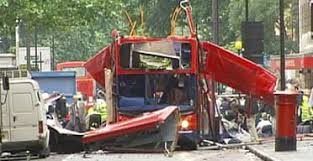 The 7/7 London bombings, 2005 The 7/7 London bombings, 2005
On the morning of 7 July 2005, four suicide bombers detonated their devices on London Underground trains and a double-decker bus, killing 52 people and injuring hundreds more.
[Photo: The Guardian]
21st-century terror
On 7 July 2005, the peace of a summer’s day in London was shattered by the first ever suicide bombings on English soil.
The attack targeted innocent commuters in the morning rush hour. Some still glowed with the news of the day before – the announcement that London would host the 2012 Olympic Games.
Motivated by extreme Islamist ideas, the attacks spread fear and anxiety. Muslims suffered increased Islamophobia. But there was also resilience – a determination not to let the attacks divide this diverse city.
While Londoners continued with their lives, they didn’t forget the victims of the attacks and created lasting memorials in their honour.
Where were the 7/7 London bombings?
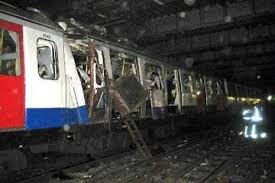 Just before 9am, three suicide bombers carrying explosives in rucksacks detonated their devices independently on London Underground trains travelling through inner London. Just before 9am, three suicide bombers carrying explosives in rucksacks detonated their devices independently on London Underground trains travelling through inner London.
One exploded between Liverpool Street and Aldgate. Another detonated between Edgware Road and Paddington. The most deadly explosion came between King’s Cross St Pancras and Russell Square, killing 26 people.
Roughly an hour after the first explosions, a fourth bomb was detonated on a London bus at Tavistock Square, killing a further 13 people.
[Photo: The Times]
Bloodied and dazed commuters emerged from the tunnels, helped by emergency workers. The London Underground network was closed, and almost all buses were suspended.
Surreal scenes followed as tens of thousands of Londoners spilled onto the street, confused by the lack of information and struggling to make their way home.
Mobile networks went down, unable to cope with the surge in calls as people tried to contact loved ones. Meanwhile, authorities desperately tried to piece together what had happened.
How many people died on 7/7?
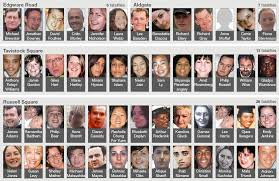 A total of 52 people were killed. More than 700 were injured, some losing limbs. The mental scars run further, still affecting passengers and the members of the emergency services who reacted. A total of 52 people were killed. More than 700 were injured, some losing limbs. The mental scars run further, still affecting passengers and the members of the emergency services who reacted.
The victims were typical of those who crowd onto buses and the Tube every day. The majority were born in the UK, but there were also many people from other countries, including Poland, Vietnam, Ghana, Mauritius and Turkey.
Each with a plan for their morning, their evening, their week.
[Photo Montage: BBC]
There were also inspiring stories of heroism and survival. Martine Wright lost both her legs, but went on to compete in the London 2012 Paralympic Games.
Honouring the dead
In our collection [at the London Museum], there’s a book of tributes by the families and friends of the 52 people who were killed. Inside, they share their intimate memories of those they lost, hoping to preserve some part of their spirit.
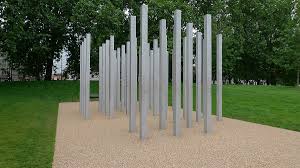 The book was previously held at St Ethelburga’s Centre for Peace and Reconciliation in Bishopsgate, where it was a focal point for visitors paying their respects. The book was previously held at St Ethelburga’s Centre for Peace and Reconciliation in Bishopsgate, where it was a focal point for visitors paying their respects.
Those who died are also commemorated at a permanent memorial in Hyde Park, where 52 steel pillars are arranged in clusters representing the four locations of the attacks.
[Hyde Park memorial: Wikipedia]
Who were the suicide bombers?
 The bombers were British men who began their journeys on 7 July from their homes in West Yorkshire and Luton. Their British nationality meant they were labelled as ‘home-grown’ terrorists. The bombers were British men who began their journeys on 7 July from their homes in West Yorkshire and Luton. Their British nationality meant they were labelled as ‘home-grown’ terrorists.
The July 7th suicide bombers [BBC]
All four were killed by their homemade explosives, just as they’d planned. The bombers were inspired by the militant Islamist group al-Qaeda, who were linked to the Madrid train bombings in 2004, the 9/11 attacks in New York in 2001 and the 1998 bombings in Kenya and Tanzania.
Al-Qaeda’s ideology pitted it against the US and its allies – including the UK – for their presence in the Middle East and the wars they’d fought in Iraq and Afghanistan.
***
Sanfermines 2025
 "Uno de enero, dos de febrero, tres de marzo, cuatro de abril, cinco de mayo, seis de junio, siete de julio, San Fermin ....." "Uno de enero, dos de febrero, tres de marzo, cuatro de abril, cinco de mayo, seis de junio, siete de julio, San Fermin ....."
The annual bull-running in Pamplona as a prelude to that afternoon's corrida de toros (bullfight) was popularised by the US journalist and writer Ernest Hemingway.
Nowadays, many thousands of visitors from around the world descend on the capital of Navarra to either take part or to observe.
I went two years running in my early twenties. I didn't run - too scary - but enjoyed the bullfights and even saw the great Paquirri as a debutant.
[Poster courtesy of Sanfermin.com]
The first encierro started at 07.15 this morning. You can view it here:
Vive San Fermín 2025 | Todos los programas de los encierros
Other links:
7 de julio – SAN FERMIN
7 de julio – San Fermín
“ ….. Siete de julio, San Fermin ….”
Sources:
BBC, Britannica, London Museum, RTE, RTVE, Wikipedia, www.eye-on-spain.com
Links:
The 7/7 London bombings, 2005 | London Museum
Vive San Fermín 2025 | Todos los programas de los encierros
© Pablo de Ronda
Photos and Images:
BBC, Daily Express, Guardian, London Museum, RTVE, Sanfermin.com, The Times, Wikipedia
With thanks to:
BBC, London Museum, Paul Whitelock, RTVE, The Culture Vulture, Wikipedia
Tags:
7/7, 9/11, Aldgate, al-Qaeda, assassination, BBC, Britannica, Cheshire, corrida de toros, Daily Express, Dallas, Edgware Road, Elvis Presley, encierro, Guardian, JFK, King’s Cross St Pancras, Liverpool Street, Lockerbie, London bus, London Museum, Madrid train bombings, New York, Paddington, Palmyra Square, pamplona, PanAm flight 103, Paul Whitelock, RTE, RTVE, Russell Square, San Fermin, Sanfermines, "siete de julio", Tavistock Square, The Culture Vulture, The Times, Twin Towers, "Uno de enero", Warrington, Wikipedia
 1
Like
Published at 8:30 AM Comments (1)
1
Like
Published at 8:30 AM Comments (1)
July 4th
Saturday, July 5, 2025
Independence Day and One Year of Starmer
 July 4th is Independence Day in America. July 4th is Independence Day in America.
It is also the first anniversary of The Labour Party storming to victory in the 2024 General Election.
[Amazon.com]
Independence Day
 Independence Day, known colloquially as the Fourth of July or July 4th, is a federal holiday in the United States which commemorates the ratification of the Declaration of Independence on July 4, 1776, establishing the United States of America. Independence Day, known colloquially as the Fourth of July or July 4th, is a federal holiday in the United States which commemorates the ratification of the Declaration of Independence on July 4, 1776, establishing the United States of America.
The Founding Father delegates of the Second Continental Congress declared that the Thirteen Colonies were no longer subject (and subordinate) to the monarch of Britain, King George III, and were now united, free, and independent states.
[WinCalendar]
Independence Day is commonly associated with fireworks, parades, barbecues, carnivals, fairs, picnics, concerts, baseball games, family reunions, political speeches, and ceremonies, in addition to various other public and private events celebrating the history, government, and traditions of the United States. Independence Day is the national day of the United States.
Background
During the American Revolution, the legal separation of the thirteen colonies from Great Britain in 1776 actually occurred on July 2, when the Second Continental Congress voted to approve a resolution of independence that had been proposed in June by Richard Henry Lee of Virginia declaring the United States independent from Great Britain's rule.
From the outset, Americans celebrated independence on July 4, the date shown on the much-publicised Declaration of Independence.
Coincidences
By remarkable coincidence, Thomas Jefferson and John Adams, the only two signatories of the Declaration of Independence later to serve as presidents of the United States, both died on the same day: July 4, 1826, which was the 50th anniversary of the Declaration.
Although not a signatory of the Declaration of Independence, James Monroe, another Founding Father who was elected president, also died on July 4, 1831, making him the third President who died on the anniversary of independence.
The only US president to have been born on Independence Day was Calvin Coolidge, who was born on July 4, 1872.
One Year of Starmer and a Labour Government
 The Labour Party commemorates one year of government today following their landslide win on July 4th, 2024. It has not been a happy few days in the run-up to the anniversary. The Labour Party commemorates one year of government today following their landslide win on July 4th, 2024. It has not been a happy few days in the run-up to the anniversary.
Mired in controversy about U-turns and incompetence, promoted by the right-wing Press, the worst examples of which are The Daily Express and The Telegraph for their scurrilous and biased reporting. The Financial Times, The Daily Mail and The i also have their moments.
Sir Keir Starmer [El Periodico]
Having staved off a major rebellion amongst Labour back-benchers they managed to get their Finance Bill through. It's not looking so clever as The Labour Government enters its second year.
Links:
Election Fever 2024
UK GENERAL ELECTION - 4 July 2024
Political Thinking with Nick Robinson - The Keir Starmer Prime Minister One - BBC Sounds
© The History Man
Pictures:
Amazon.com, BBC, El Periodico, WinCalendar,
With thanks to:
BBC Sounds, Paul Whitelock, The History Man
Tags:
BBC Sounds, Keir Starmer, Nick Robinson, Paul Whitelock, Political Thinking, The History Man,
 0
Like
Published at 1:33 AM Comments (1)
0
Like
Published at 1:33 AM Comments (1)
Happy Easter! - Spanish style
Sunday, April 20, 2025
Sunday, April 20, 2025
 In Christian countries Easter Sunday signifies the end of the Easter celebrations, although in the UK and the USA Easter Monday is a Bank Holiday. In other Christian cultures, this particular Monday is a normal working day, eg in Germany, Italy and Spain. In Christian countries Easter Sunday signifies the end of the Easter celebrations, although in the UK and the USA Easter Monday is a Bank Holiday. In other Christian cultures, this particular Monday is a normal working day, eg in Germany, Italy and Spain.
[Image courtesy of My Postcard]
The Story of Easter
According to Christian tradition the Easter period starts with Palm Sunday, recalling the day Our Lord entered Jerusalem to a great welcome riding on a donkey.
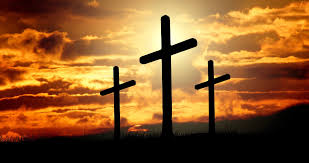 By the following Friday He had been crucified by the Roman governors along with some petty thieves and died. He rose from the grave on Easter Sunday and ascended into Heaven to sit alongside His Father, God. By the following Friday He had been crucified by the Roman governors along with some petty thieves and died. He rose from the grave on Easter Sunday and ascended into Heaven to sit alongside His Father, God.
In secular societies such as the UK and France not much happens, whereas in Roman Catholic countries like Italy and Spain there is a much more religious aspect on display.
[Photo: Ascension Press]
Semana Santa in Spain
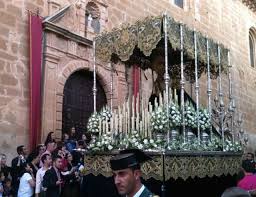 In Spain, especially in Andalucia, from Palm Sunday until Easter Sunday (Semana Santa - Holy Week) there are Easter processions (desfiles) every day. In Spain, especially in Andalucia, from Palm Sunday until Easter Sunday (Semana Santa - Holy Week) there are Easter processions (desfiles) every day.
This is when the various cofradias linked to different churches in a town or village, get out their tronos, wooden "carriages" with statues of the Virgin Mary and of Christ on the Cross, which are carried through the streets on the shoulders of costaleros, usually, the menfolk of the parish.
[Photo: Hike and Bike the Sierras]
I find these parades spectacular and very moving, whereas my German wife does not and avoids them like the plague. Many foreigners find them fascinating, more so tourists than residents. The local Spanish, however, turn out en masse, "dressed to the nines". A time to see and be seen.
On Palm Sunday morning this year I chanced upon the opening two processions, just as they were starting out. After a week of heavy rain we were blessed with a dry day and they started off in bright sunshine around noon. Some processions later in the week were sadly rained off.
Easter shut-down
 In Ronda (Malaga), where I live, the town shuts down from jueves santo until domingo de Resurreccion, although these days the foreign-owned supermarkets tend to open, eg the German discounters Aldi and LIDL and French-owned Al Campo, Carrefour and Supeco. In Ronda (Malaga), where I live, the town shuts down from jueves santo until domingo de Resurreccion, although these days the foreign-owned supermarkets tend to open, eg the German discounters Aldi and LIDL and French-owned Al Campo, Carrefour and Supeco.
The Spanish-owned Dia, Eroski, Mercadona and Super Carmela keep their doors firmly shut.
Some businesses close for the entire week, compelling their employees to take leave whether they want to or not. In Ronda Big Mat La Toma, the builders merchants, is a prime example.
[Image: Good Housekeeping]
So, construction companies either have to plan ahead or also shut down. The only places open all week are bars, cafes, restaurants and tourist shops, because they can make a fortune!
Final thoughts
 I love the atmosphere and tradition of Easter in Spain. A time of sadness and joy, of spectacular processions and warm community spirit, of families coming together. I love the atmosphere and tradition of Easter in Spain. A time of sadness and joy, of spectacular processions and warm community spirit, of families coming together.
I hope it will survive forever.
[Image: ACI Prensa]
Note: This post also appears at The Culture Vulture:
Happy Easter!
© The Culture Vulture and The History Man
Photos and images:
ACI Prensa, Ascension Press, Charry TV, Good Housekeeping, Hike and Bike the Sierras, My Postcard, Paul Whitelock, Ronda Semanal, Trip Advisor, Wikipedia
Acknowledgements:
Diario Sur, Paul Whitelock, The Culture Vulture, The History Man, Wikipedia
Links:
Guide to Semana Santa in Ronda | Andalucia.com
Semana Santa 2025: A Guide to Spain's Holy Week Celebrations
Semana Santa Archives - Ronda Today
SEMANA SANTA (Holy Week)
Will Spain's hallowed Semana Santa be another washout? Storm Olivier brings orange alerts to Andalucia - Olive Press News Spain
Tags:
ACI Prensa, Ascension Press, Al Campo, Aldi, Andalucía, ascended into Heaven, a time to see and be seen, atmosphere, Bank Holiday, Big Mat La Toma, builders merchants, Carrefour, Charry TV, Christian tradition, Christ on the cross, Clive Muir, cofradias, community spirit, construction companies, costaleros, crucified, desfiles, Dia, Diario Sur, domingo de Resurreccion, "dressed to the nines", Easter Monday, Easter processions, Easter shut-down, Easter Sunday, Eroski, families coming together, foreigners find them fascinating, foreign-owned supermarkets, France, French-owned, German discounters, Germany, God, Good Housekeeping, Happy Easter, Hike and Bike the Sierras, Holy Week, Italy, Jerusalem, jueves santo, LIDL, make a fortune, Mercadona, Michael Coy, normal working day, My Postcard, Olive Press News, open all week, Palm Sunday, Palm Sunday morning, Paul Whitelock, processions rained off, residents, Roman Catholic countries, Ronda Semanal, Ronda Today, sadness and joy, Semana Santa, Spain, Spanish-owned, spectacular processions, Supeco, Super Carmela, The Culture Vulture, The History Man, tourists, tourist shops, tradition, Trip Advisor, tronos, UK, Virgin Mary, Wikipedia
 0
Like
Published at 11:42 AM Comments (0)
0
Like
Published at 11:42 AM Comments (0)
Spam post or Abuse? Please let us know
|
|